Multi Part Identifier Could Not Be Bound
When working with SQL queries, you may come across an error message that says “The multi part identifier could not be bound.” This error message typically occurs when there is an issue with identifying a specific part in the query.
Definition of a multi part identifier and its significance in SQL:
In SQL, a multi part identifier refers to a combination of multiple parts that together identify a specific object within the database. It typically consists of the object name and one or more qualifiers. For example, in the query “SELECT Orders.OrderID FROM Orders,” “Orders” is the object name and “OrderID” is the identifier.
The significance of a multi part identifier lies in its ability to uniquely identify a specific object in a database. It is crucial for referencing tables, views, columns, or any other objects within SQL queries.
Common scenarios leading to the multi part identifier error:
There are several common scenarios that can lead to the multi part identifier error. Some of these include:
1. Misspelled object names: If an object name is misspelled in the query, the multi part identifier error can occur.
2. Missing or incorrect qualifiers: If the qualifiers are missing or incorrect, the error can arise. For example, if you attempt to reference a column without specifying the table it belongs to, the error message can be triggered.
3. Ambiguous identifiers: When a query involves multiple tables with the same column name, it can lead to ambiguity and result in the multi part identifier error.
Unqualified vs. qualified multi part identifiers and their impact on the error:
An unqualified multi part identifier refers to an identifier that does not specify the table or object it belongs to explicitly. For example, using “Column1” instead of “Table1.Column1” in a query. Unqualified identifiers can often lead to the multi part identifier error because the SQL engine can’t determine which specific object is being referenced.
On the other hand, qualified multi part identifiers explicitly specify the object or table to which the identifier belongs. This helps avoid ambiguity and reduces the chances of encountering the error.
Identifying the specific part that could not be bound in the error message:
The error message “The multi part identifier could not be bound” does not explicitly state which part of the identifier caused the error. To identify the specific part, carefully review the query and ensure that all object names, qualifiers, and identifiers are correctly referenced. Pay attention to spelling, case sensitivity, and the proper use of aliases or table names.
Causes of a multi part identifier not being bound:
There are several causes for a multi part identifier not being bound in a SQL query. Some of the common causes include:
1. Misspelled object names: If an object name is misspelled, the SQL engine will not be able to locate it and will generate the error.
2. Missing or incorrect qualifiers: If the qualifiers are missing or incorrect, the SQL engine will be unable to identify the specific object being referenced.
3. Ambiguous identifiers: When a query involves multiple tables with the same column name and no explicit qualifier is used, the SQL engine will not be able to determine which object the identifier refers to.
How database schema changes can trigger the multi part identifier error:
Modifying the structure of a database, such as renaming or deleting tables or columns, can lead to the multi part identifier error. If a query has not been updated to reflect these changes and still references the old object names or columns, the error will occur.
Strategies for troubleshooting and resolving the multi part identifier error:
When troubleshooting and resolving the multi part identifier error, consider the following strategies:
1. Double-check the spelling and case sensitivity of object names and identifiers.
2. Review the query for missing or incorrect qualifiers.
3. Ensure that the query references the correct objects and columns.
4. If the error occurs in a complex query involving multiple tables, check for ambiguity issues and use explicit qualifiers.
Potential workarounds to address the error in SQL queries:
Here are some potential workarounds to address the multi part identifier error in SQL queries:
1. Use explicit qualifiers to specify the object or table to which the identifier belongs.
2. Aliases can be used to provide unique names for columns or tables, reducing the chance of encountering the error.
3. Rewrite the query to eliminate ambiguity by using joins or subqueries to access the required data.
Best practices to avoid encountering the multi part identifier error in the future:
To avoid encountering the multi part identifier error in the future, consider implementing the following best practices:
1. Use explicit qualifiers whenever referencing objects or columns in queries.
2. Double-check the spelling and case sensitivity of object names and identifiers.
3. Regularly update queries to reflect any changes in the database schema.
4. Use aliases to provide unique names for columns or tables and avoid naming conflicts.
FAQs:
Q: What does the multi part identifier error mean?
A: The error message “The multi part identifier could not be bound” indicates that there is an issue with identifying a specific part in a SQL query.
Q: How can I identify the specific part that caused the error?
A: To identify the specific part, review the query and ensure that all object names, qualifiers, and identifiers are correctly referenced.
Q: How can I troubleshoot and resolve the multi part identifier error?
A: Some strategies to troubleshoot and resolve the error include double-checking the spelling and case sensitivity of object names and identifiers, reviewing for missing or incorrect qualifiers, and ensuring that the query references the correct objects and columns.
Q: What are some potential workarounds for the multi part identifier error?
A: Using explicit qualifiers, aliases, or rewriting the query to eliminate ambiguity are some potential workarounds to address the error in SQL queries.
Q: How can I avoid encountering the multi part identifier error in the future?
A: To avoid the error, it is important to use explicit qualifiers, double-check object names and identifiers for spelling and case sensitivity, regularly update queries to reflect any changes in the database schema, and use aliases to provide unique names for columns or tables.
Mssql How To Fix Error The Multi Part Identifier Could Not Be Bound
Keywords searched by users: multi part identifier could not be bound the multi-part identifier could not be bound c#, The multi part identifier could not be bound update, The multi part identifier p id could not be bound, SQL the multi part identifier, Msg 4104, SQL update multiple rows from SELECT, SELECT multiple table, JOIN with multiple conditions SQL
Categories: Top 11 Multi Part Identifier Could Not Be Bound
See more here: nhanvietluanvan.com
The Multi-Part Identifier Could Not Be Bound C#
Understanding the Error:
In C#, the “multi-part identifier could not be bound” error typically occurs within SQL queries when joining tables or referencing columns and aliases. A multi-part identifier is composed of multiple parts, such as the table name and column name, joined by a dot. The error message indicates that some part of this identifier could not be bound, meaning it cannot be found or resolved in the specified context.
Causes of the Error:
1. Table or Column Name Spelling Mistake:
One of the primary reasons for this error is an incorrect spelling of a table or column name in the query. Even a single character difference can lead to the multi-part identifier error.
2. Missing Table Alias:
If you are using aliases in your query and forget to assign an alias to a table, attempting to reference that alias will cause this error. Ensure all tables have appropriate aliases, and those aliases are correctly used throughout the query.
3. Incorrect Joining Condition:
When joining tables, it is crucial to ensure that the joining condition is properly defined and that the necessary columns are available. A mistake in the join condition, such as referencing an incorrect column or using the wrong comparison operator, can cause the multi-part identifier error.
4. Wrongly Referencing a Subquery:
If you have a subquery within your main query, ensure that you correctly reference the subquery’s output in the parent query. Incorrect referencing can lead to unbound identifiers and result in the error.
5. Nested Queries with Ambiguous Identifiers:
When using nested queries, ambiguous column or table references can cause the “multi-part identifier could not be bound” error. To resolve this, use table aliases and ensure that references are unambiguous within the nested queries.
Solutions to the Error:
1. Verify and Correct Table and Column Names:
First and foremost, carefully review the table and column names in the query to ensure they are spelled correctly. Even minor typographical errors can cause this error. Fix any mistakes, and rerun the query.
2. Assign and Use Table Aliases:
If you are using table aliases, ensure that every table is assigned an alias. Additionally, double-check that aliases are used consistently throughout the query. By doing so, you will prevent unbound identifiers caused by missing or wrongly referenced aliases.
3. Validate Joining Conditions:
When joining tables, meticulously review the joining conditions. Verify that the column names referenced in the condition exist and are correctly spelled. Additionally, confirm that the comparison operator being used is appropriate for the columns’ data types.
4. Review Subquery References:
If you are utilizing subqueries in your query, inspect the references to ensure they are correctly addressing the subquery’s output. Make sure that the subquery’s alias, if used, is appropriately referenced in the parent query.
5. Resolve Ambiguous Identifiers in Nested Queries:
For nested queries, verify that any ambiguous identifiers, such as column names, are addressed uniquely to avoid conflicts. Using appropriate table aliases and fully qualifying column references can resolve this issue.
FAQs:
Q: Can this error occur in languages other than C#?
A: This specific error is often encountered in C# due to its common usage of SQL for database operations. However, similar errors can occur in other programming languages when performing SQL queries.
Q: Is this error specific to a particular database management system (DBMS)?
A: No, the “multi-part identifier could not be bound” error can occur in various DBMS like SQL Server, MySQL, Oracle, etc., as it relates to SQL query syntax.
Q: What should I do if none of the solutions work?
A: If none of the provided solutions fix the error, consider seeking help from an experienced developer or debugging the query step by step to identify the exact cause.
Q: How can I prevent this error in the future?
A: To prevent this error, practice good coding habits, such as double-checking table and column names, using aliases consistently, and carefully constructing joining conditions. Additionally, use proper indentation and formatting, making it easier to spot syntax and spelling errors.
In conclusion, the “multi-part identifier could not be bound” error is commonly encountered by C# developers working with SQL queries. Understanding the causes and implementing the suggested solutions will help you effectively troubleshoot and resolve this error, ensuring smooth database operations within your C# applications.
The Multi Part Identifier Could Not Be Bound Update
When working with databases, it is not uncommon to encounter errors that can be puzzling and frustrating. One such error that developers often come across is the “Multi-Part Identifier Could Not Be Bound” update error. This error message indicates that the identifier used in the query cannot be resolved to a single object. In this article, we will explore what this error means, the root causes behind it, and how to resolve it effectively.
Understanding the Multi-Part Identifier Could Not Be Bound Error
In SQL, identifiers can refer to various database objects such as tables, views, columns, or aliases. These identifiers are used to define relationships, retrieve data, and perform various operations within the database. However, when an identifier is composed of multiple parts and cannot be resolved to a specific object, the “Multi-Part Identifier Could Not Be Bound” error occurs.
This error typically occurs when attempting to perform an update operation on a table. It means that the identifier used in the update query references either an ambiguous or non-existent object. The error message provides insights into the source of the issue and usually includes the specific part(s) of the identifier that could not be bound.
Root Causes of the Multi-Part Identifier Could Not Be Bound Error
1. Missing or Incorrect Object Name: One common cause of this error is incorrect or missing object names in the update query. When referencing a table or a column, be certain that the exact name is used, along with the correct schema qualification if necessary.
2. Table Aliases: When aliases are used for table names in a query, they need to be used consistently throughout the query. In many cases, failing to include the correct alias can result in the “Multi-Part Identifier Could Not Be Bound” error.
3. Nested Queries: If a query involves nested queries or subqueries, it is crucial to ensure that the proper aliases or object names are used in each part of the query. Mismatched or missing aliases can be a common source of this error.
4. Schema References: When dealing with multiple schemas or databases, not including the correct schema qualification can lead to the error. Ensure that the referenced object is in the same schema or provide the necessary schema prefix to resolve the identifier.
Resolving the Multi-Part Identifier Could Not Be Bound Error
1. Verify Object Names: Double-check the object names used in the update query. Ensure that they correspond exactly to the actual objects in the database, including any necessary schema qualifications.
2. Use Table Aliases Consistently: If aliases are being used, ensure they are included consistently throughout the query. Additionally, verify that the correct aliases are used for each reference to avoid any ambiguity.
3. Check Nested Queries: If the query contains nested queries or subqueries, go through each part of the query and verify that the object references or aliases are correctly matched. Correct any inconsistencies or missing references.
4. Add Schema Qualifications: If working with multiple schemas, provide the necessary schema qualifications to the identifier. This ensures that the database engine can accurately locate the referenced object.
FAQs
Q: What does the error message “The multi-part identifier could not be bound” mean?
A: This error message indicates that the identifier used in the update query could not be resolved to a single object in the database, either due to ambiguity or non-existence.
Q: How can I avoid the “Multi-Part Identifier Could Not Be Bound” error?
A: To avoid this error, always ensure that the object names or aliases used in the query are correct and consistent. Double-check for any missing or mismatched references.
Q: Can this error occur with other SQL operations besides updates?
A: While this error is commonly encountered during update operations, it can occur with other SQL operations such as SELECT, INSERT, or DELETE if the identifier is used incorrectly or ambiguously.
Q: Why am I still getting the error after checking all the object names and references?
A: In some cases, this error can stem from more complex issues such as database corruption or incorrect query construction. If the issue persists despite verifying the basics, it may be helpful to seek assistance from a experienced database administrator or programmer.
Conclusion
The “Multi-Part Identifier Could Not Be Bound” update error is a common stumbling block in database programming. Understanding its causes and knowing how to resolve it effectively can save significant time and frustration. By verifying object names, using consistent aliases, and providing accurate schema qualifications, developers can address this error and ensure the smooth execution of their database operations.
The Multi Part Identifier P Id Could Not Be Bound
In the world of database management systems, the term “multi-part identifier” refers to an expression that identifies a specific column or field within a table. These identifiers are used extensively in querying and manipulating data. However, sometimes while working with queries in Microsoft SQL Server, you might encounter an error message stating “The multi-part identifier ‘p.id’ could not be bound.” In this article, we will explore the possible causes of this error and provide solutions to resolve it.
Understanding the Error Message
To fully comprehend the error message “The multi-part identifier ‘p.id’ could not be bound,” it is crucial to break down its components. The term “multi-part identifier” suggests that the error is related to an identifier that consists of multiple parts. An identifier usually follows the pattern “table.column,” where “table” represents the table name and “column” represents the column or field name within that table.
In our case, the identifier in question is ‘p.id,’ which implies that we are trying to reference a column named ‘id’ within a table named ‘p.’ The error message indicates that the SQL server is unable to determine the specified identifier.
Causes of the Error
1. Typos or misspellings: The most common cause of this error is a typo or misspelling in the table or column name. Even a minor error can result in the SQL server failing to identify the intended identifier.
2. Table or column does not exist: Another possibility is that the table or column specified in the identifier does not exist. Make sure to verify the table and column names that are being referenced.
3. Scope issues: This error can occur when referencing a column within a subquery or derived table. The outer query cannot bind to a column inside the subquery, leading to the “multi-part identifier could not be bound” error message.
4. Aliases not assigned: If an alias is assigned to a table or column, it must be used to reference it correctly. Failure to use the assigned alias can result in the error message.
5. Differing case sensitivity: SQL Server treats table and column names as case-insensitive by default. However, if the server is set to be case-sensitive, mismatches in the case of the specified identifier can cause the error.
Resolving the Error
Now that we understand what can cause this error, let’s explore some solutions to resolve it:
1. Check for spelling and typos: Carefully review the identifier being referenced and ensure that it matches the actual names of the table and column without any typographical errors.
2. Verify the existence of tables and columns: Double-check the existence of the tables and columns specified in the identifier. It is crucial to ensure that the names are accurate and that the database schema has not changed.
3. Analyze scope issues: If the error occurs within a subquery or derived table, consider modifying the query to move the column reference to the outer query or checking if an alias is available for the column within the subquery.
4. Use aliases correctly: If aliases are assigned to tables or columns, make sure to use them consistently throughout the query. Avoid referencing the table or column directly without utilizing the assigned alias.
5. Modify the case sensitivity: In case the server is set to be case-sensitive, adjust the case of the identifier to match the actual names of the table and column.
FAQs
Q: I have checked for typos, but the error still persists. What could be causing it?
A: Ensure that the table and column names are enclosed in the appropriate delimiters like square brackets ([]), especially if they contain special characters or reserved words.
Q: Can this error occur when joining tables?
A: Yes, the error can occur during joins if there is an issue with the specified join condition or if the tables being joined do not contain the referenced columns.
Q: I am referencing a column from a different database. Can that cause the error?
A: Yes, when referencing a column from another database, you need to qualify the table name with the database name, such as ‘database.schema.table.column.’
Q: Why does this error only occur sometimes and not consistently?
A: The error can occur inconsistently if the query involves dynamic or conditional logic, where certain conditions can lead to the referenced identifier not being bound.
In conclusion, encountering the error message “The multi-part identifier ‘p.id’ could not be bound” can be frustrating. However, by carefully examining the possible causes and implementing the appropriate solutions discussed in this article, you can effectively resolve the issue and continue working with SQL Server queries seamlessly.
Images related to the topic multi part identifier could not be bound

Found 41 images related to multi part identifier could not be bound theme









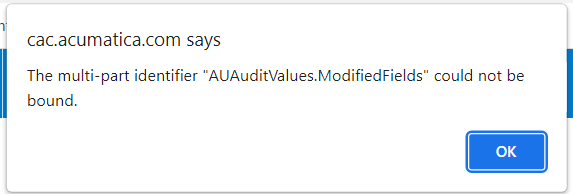






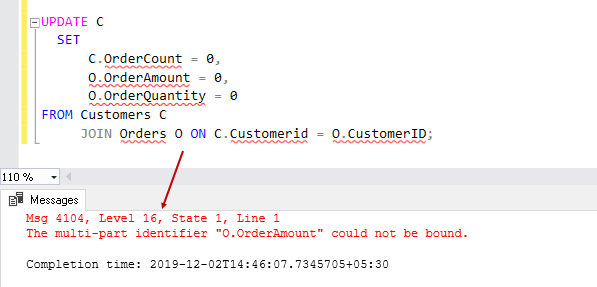

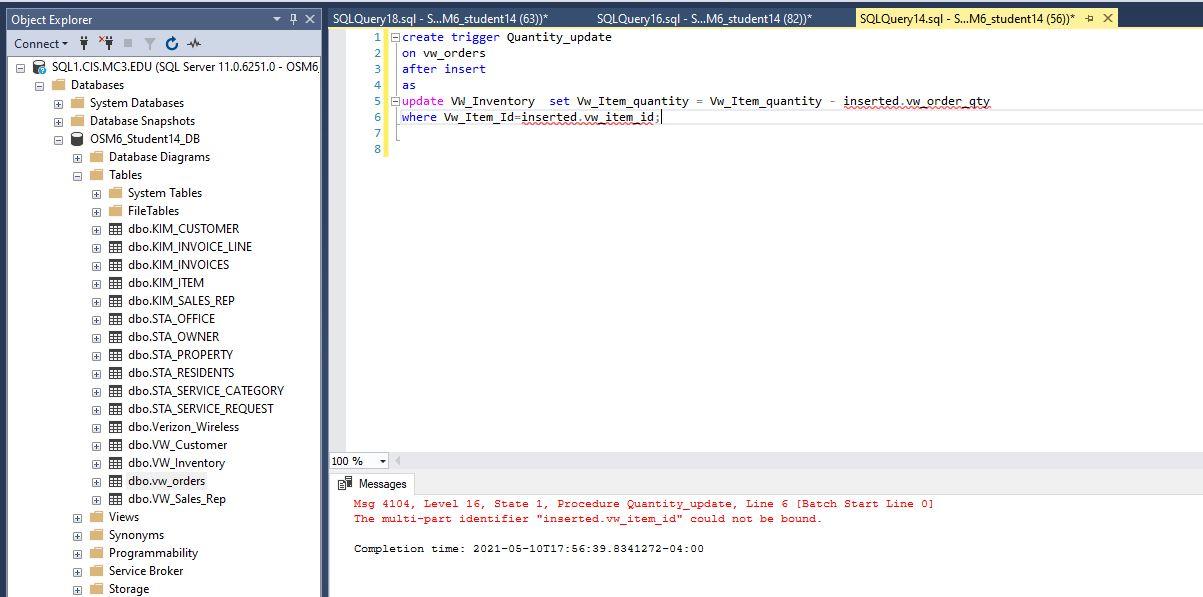








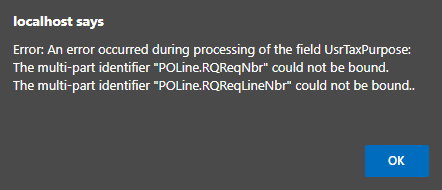



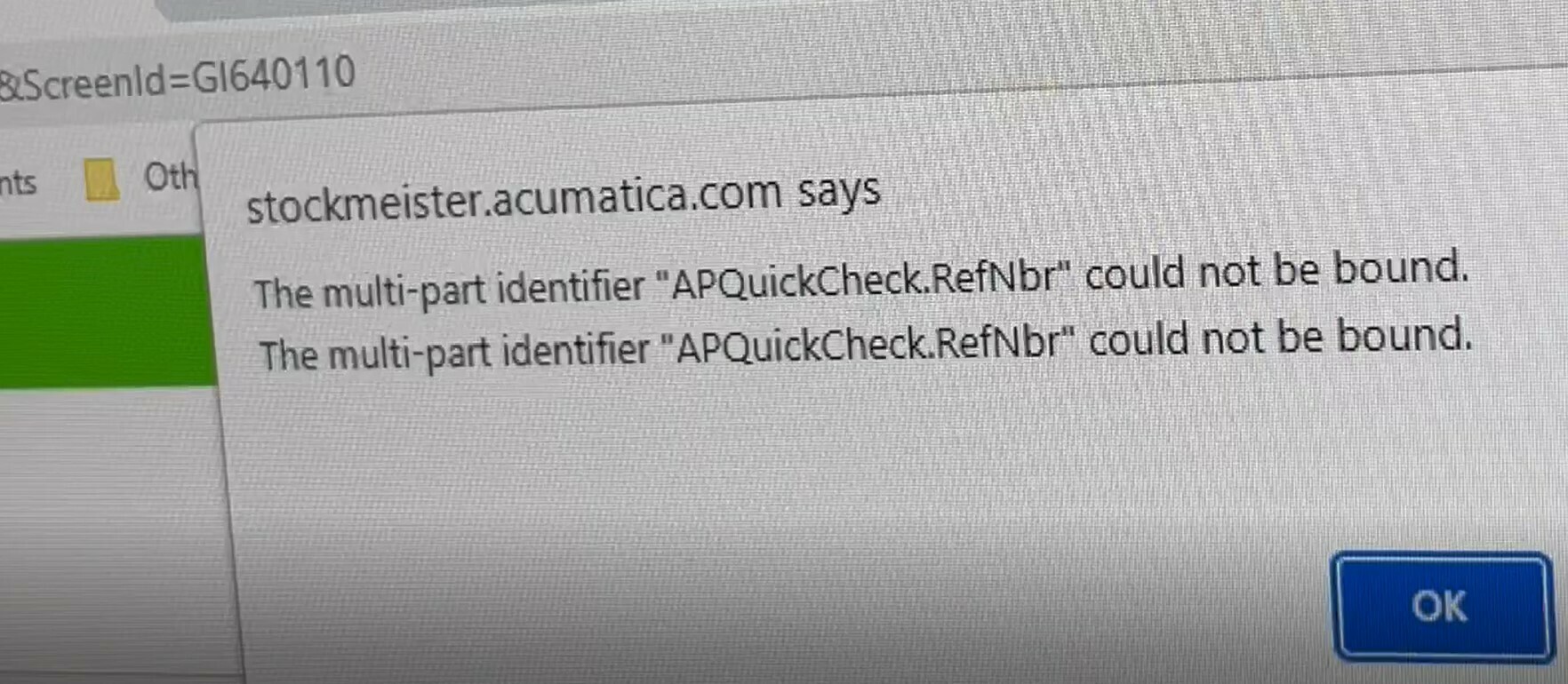







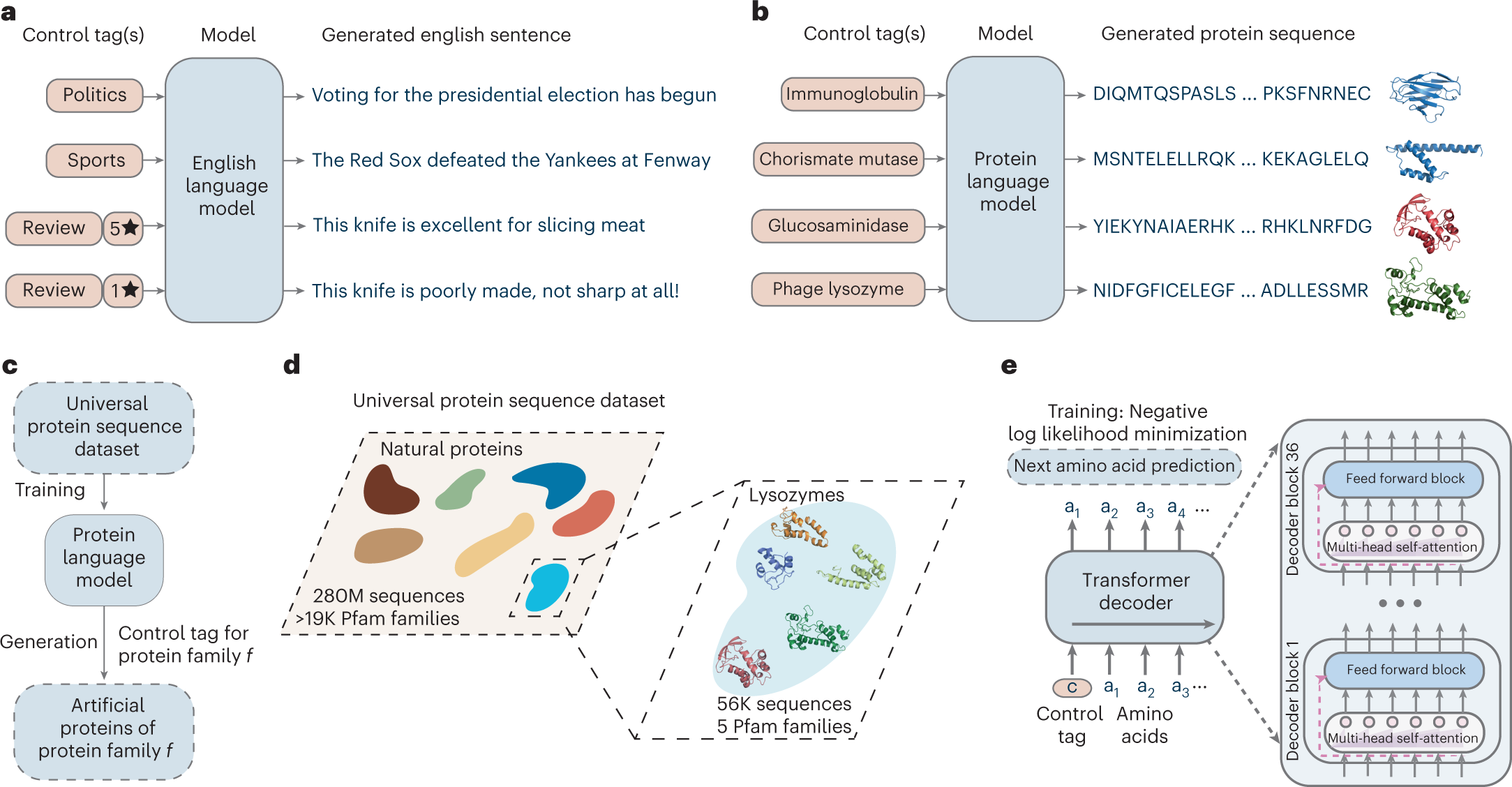
Article link: multi part identifier could not be bound.
Learn more about the topic multi part identifier could not be bound.
- The multi-part identifier could not be bound – Stack Overflow
- SQL Server Error 4104: The multi-part identifier could not be …
- The Multi Part Identifier Could Not Be Bound: Causes and Fixes
- The multi-part identifier could not be bound error.
- Fixing the error: The multi-part identifier … could not be bound …
- multi-part identifier could not be bound [closed]
- the multi-part identifier could not be bound (sql error = 4104)
- Error: Multi-part Identifier cannot be bound – SAP Answers
- multi-part identifier “t1.__RowNumber__” could not be bound.
See more: nhanvietluanvan.com/luat-hoc